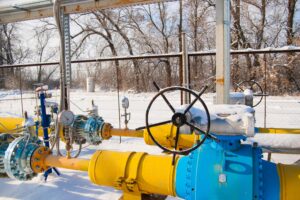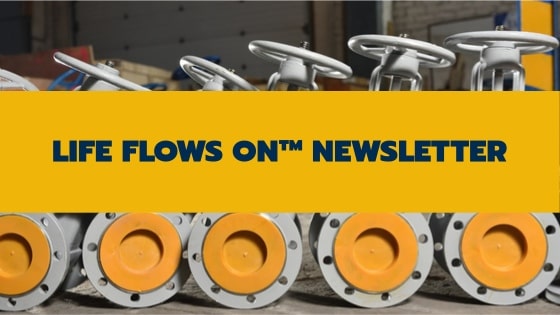The Metal Service HVOF Ball Valves Buyers Guide

You can increase safety and extend the life of gas and liquid handling mechanisms with HVOF ball valves.
Whether you’re handling liquids, solids, or gases, high-quality HVOF ball valves are vital for the safe and effective operation of your valve system.
Ball valves regulate flow. They also perform other important functions.
However, there are several types of ball valves. Each one is ideal for a different kind of application.
Ball valves are available in a range of materials from rubber to steel. Your application will determine the type of ball valve that you need. Some applications, however, might require an HVOF coating.
For a metal service HVOF ball valve buyers guide, read on.
The Benefits of HVOF Coatings
High-Velocity Oxy-Fuel (HVOF) is a protective coating for ball valves. It extends service life.
HVOF also enhances the performance of metal seated ball valves. Ultimately, it enhances safety and uptime and also improves operator productivity.
Typically, you’ll see ball valves used in chemical, petroleum, and mining industries. In these fields, chemicals and fluids can wear down interior ball valve particles. Furthermore, they can cause abrasion and wear damage when trapped between rotating and stationary surfaces.
Also, materials in a service line typically move at a high rate of speed. For this reason, the impact of fast-moving particles can also contribute to internal erosion and wear.
Nevertheless, metal seated ball valves are the best devices for handling abrasive, corrosive, and hot materials. The unique design of ball valves makes them ideal for these applications.
However, an HVOF coating increases the wear resistance of these devices. The protective coating may vary in thickness.
How the HVOF Coating Process Works
The HVOF spraying process works by mixing liquid fuel and oxygen. A fabricator will feed the mixture into a combustion chamber and then ignite it.
This method creates high pressure and temperature. These forces cause the mixture to eject from the nozzle at supersonic speed.
The fabricator will then inject an HVOF powder into the gas stream. The powder will melt partially as it enters the stream.
Now, the powder will adhere to the inside of the ball valve. The result is a dense coating with low porosity and high bond characteristics.
The coating combines the hardness of ceramic with the durability of metal. HVOF powder coating also creates excellent wear properties and corrosion resistance within the resulting metal matrix.
Types of Ball Valves
When buying valves, companies usually choose four common types of ball valves. Those valves are:
1. Full port ball valves
2. Reduced port ball valves
3. Standard port ball valves
4. V port ball valves
Facilities use these kinds of ball valves to control the flow of liquids or gas. However, not every ball valve is suited for every application.
Full Port and Standard Port Ball Valve
A full port ball valve features an oversized hole. The large opening allows unrestricted flow.
With this kind of valve, the pipeline and the ball valve exit are the same sizes. As a result, there is little friction in the line. This kind of valve works well for an application where a large valve is acceptable.
A standard ball valve has a small ball and port. It’s a less expensive control mechanism.
This kind of ball valve is a cost-effective control mechanism. However, it does restrict flow to a degree. For this reason, it’s not suited for every application.
Reduced and V Port Ball Valves
A reduced port ball valve shrinks pipeline flow as desired. In other words, the exit side of the valve is smaller than the pipe.
Finally, a V port ball valve is ideal if you need to control a flow rate. The ball has a shape like a V, hence its name.
The design of the V port ball valve enables adjustment from a trickle to full flow. For this reason, this kind of ball valve is ideal if you need to maintain various flow characteristics.
Facilities also deploy other ball valve variations, such as welded and trunnion ball valves. These kinds of ball valves are improvements on the basic ball valve design with modifications for high-pressure or flow applications.
Chromium Carbide HVOF Ball Valves
There are also different types of HVOF coatings. For example, a chromium carbide HVOF coating provides a hardness of approximately 65 on the Rockwell scale. A ball valve coated with chromium carbide HVOF resists extreme temperatures and erosion.
A fabricator may apply the coating using a thermal spray. This method adds porosity to the finished product.
Alternatively, a fusion coating is nonporous. The high-velocity oxygen-fuel application of fusion coating also makes a ball valve more fracture resistant.
Chromium carbide HVOF has less nickel-chrome binder. For this reason, it’s harder and more erosion resistant. When applied correctly, it does little to undermine a ball valve’s resistance to thermal shock.
Why More Companies Opt for HVOF Spray Treatment
A fused HVOF coating is more nonporous. However, companies rarely requisition this kind of treatment.
A metal ball valve treated with the fused HVOF method is typically softer. Also, the base metal of a ball valve is usually nickel.
The HVOF fusion process creates heat in excess of 1800°. At that temperature, the heat can distort the base metal.
This characteristic makes the HVOF fusion process more expensive. Accordingly, it’s not suitable for most applications.
Cobalt-Based Alloys HVOF Ball Valves
Fabricators also apply cobalt-based metal treatment using thermal spraying. They can also apply HVOF with methods such as spraying, fusing, or welding.
Fusion-welded metal HVOF ball valves are softer. However, the spray application of HVOF results in some of the hardest metals available.
For instance, fabricators can create Stellite 6 and Tribaloy using the method. These metals have a hardness rating of more than 68. For this reason, they are popular coatings for metal ball valves.
A Trusted Supplier for Reliable Industrial Components
It’s important to choose the right HVOF ball valves for your application. The right ball valve will help you to control the flow of gases, liquids, or solids. More importantly, it will help you to keep materials running smoothly as well as keep costs within budget.
HVOF-treated metal ball valves are the easiest control mechanism to operate. They can stand up to a vast range of materials. For this reason, they’re a popular control mechanism for many facilities.
Anything Flows has a wide range of materials for nearly any application. Contact an Anything Flows rep today at (832) 987-3494 or connect with us online to get started designing or finding the best ball valves for your project.

